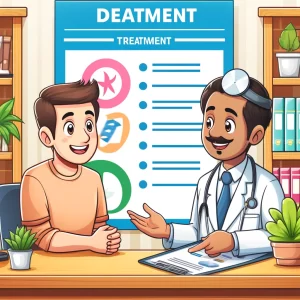
Why Vaccine-Preventable Diseases Pose Long-Term Risks for Adults Over 50
Vaccines have long been heralded for their role in preventing immediate illness. But what if their benefits extended far beyond that, influencing long-term health in profound ways? For adults over 50, particularly those hospitalized with vaccine-preventable diseases (VPDs) like flu, pneumonia, and shingles, the story doesn’t end after the acute infection subsides.
Emerging research reveals that these diseases can cause a ripple effect, leading to new chronic health conditions, diminishing independence, and even increasing the risk of premature death. This article dives into the latest findings to shed light on why vaccination is essential, not just to prevent illness, but to protect long-term health and quality of life.
The Growing Impact of Vaccine-Preventable Diseases on Older Adults
The health implications of VPDs, such as the flu, herpes zoster, and pneumococcal disease, have traditionally been associated with the short-term discomfort they cause. However, a recent study has quantified the long-term effects these diseases have on older adults. Analyzing U.S. hospital data from 2016 to 2019, researchers compared adults aged 50 and older hospitalized for VPDs with matched controls—people who were hospitalized but did not have VPDs. Over one year, the outcomes were starkly different for those with VPDs: they faced higher risks of new chronic illnesses, a significant increase in mortality rates, and a loss of independence.
New Health Challenges Post-VPD Hospitalization
A particularly concerning finding is the increase in new, life-altering health conditions among those who recover from VPDs. For instance, over 65% of VPD patients developed new chronic conditions within a year of hospitalization. Compared to controls, these patients were far more likely to experience conditions like heart disease, diabetes, and chronic respiratory issues. This heightened vulnerability to new illnesses doesn’t just complicate day-to-day living; it signifies an overall decrease in health resilience.
Consider someone in their late 60s who has just recovered from a severe case of influenza. A few months later, they’re diagnosed with chronic heart disease. Before the flu, they might have been relatively active, managing existing health conditions well. But post-influenza, the toll on their immune system has opened the door to other diseases, which may have remained dormant under normal circumstances. The study found that this pattern is alarmingly common, underscoring the importance of preventive measures.
Increased Mortality Risks for VPD Patients
Beyond the onset of new illnesses, the study revealed a significant increase in mortality rates for VPD patients. Within just 30 days of hospitalization, those with VPDs were four times more likely to die than their non-VPD counterparts. One year out, that risk was still nearly three times higher. These statistics speak volumes about the unseen costs of these diseases, highlighting the need for more comprehensive healthcare strategies focused on prevention through vaccination.
Independence and Quality of Life: A Steep Decline
For many, the hardest blow may be the loss of independence following a VPD. A whopping 41% of VPD patients could not return to their previous lifestyles, compared to just 12% of the control group. This change often meant a need for home care support, while some moved to long-term care facilities.
Imagine being an active retiree who enjoys gardening or daily walks in the neighborhood. After a bout of pneumonia, you may now rely on family members or professional caregivers for help with basic tasks. That independence—once taken for granted—has been compromised, making day-to-day life increasingly dependent on others. For many, this loss is more than a logistical change; it marks a shift in personal identity, making it a deeply emotional transition as well.
The Role of Vaccination in Reducing Long-Term Burdens
While this study paints a sobering picture, it also shines a light on the preventative power of vaccination. By getting vaccinated, older adults can reduce not only their chances of contracting VPDs but also avoid these long-term health challenges. Despite the well-documented benefits, vaccination rates among older adults in the U.S. are often lower than public health experts would like. Awareness campaigns highlighting the long-term benefits of vaccination—such as preserving quality of life and independence—could play a significant role in increasing these rates.
For instance, the flu vaccine doesn’t just reduce your risk of catching the flu; it can help you avoid cascading health issues down the road, from heart attacks to mobility challenges. Given the rising healthcare costs associated with long-term care, the implications of increased vaccination are both health-related and economic. By investing in vaccine awareness and accessibility, society stands to save on healthcare costs while improving the quality of life for millions.
Join the Conversation
What do you think about the long-term impacts of vaccine-preventable diseases? Have you or a loved one experienced lasting effects from a VPD? Share your thoughts and experiences in the comments or join us on social media. Let’s start a conversation about the value of vaccination in protecting our health and independence.
Join the Community – Get Your Weekly Public Health Update!
Be a health leader! Subscribe for free and share this blog to shape the future of public health together. If you liked this blog, please share it! Your referrals help This Week in Public Health reach new readers.



